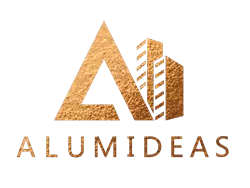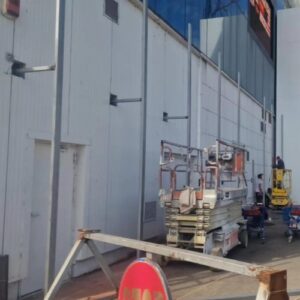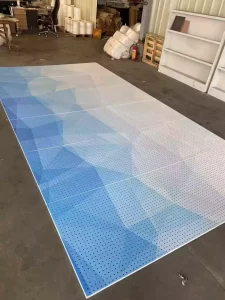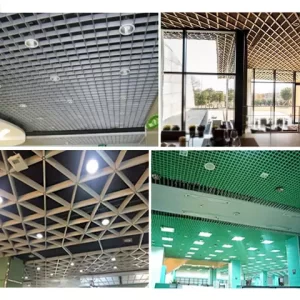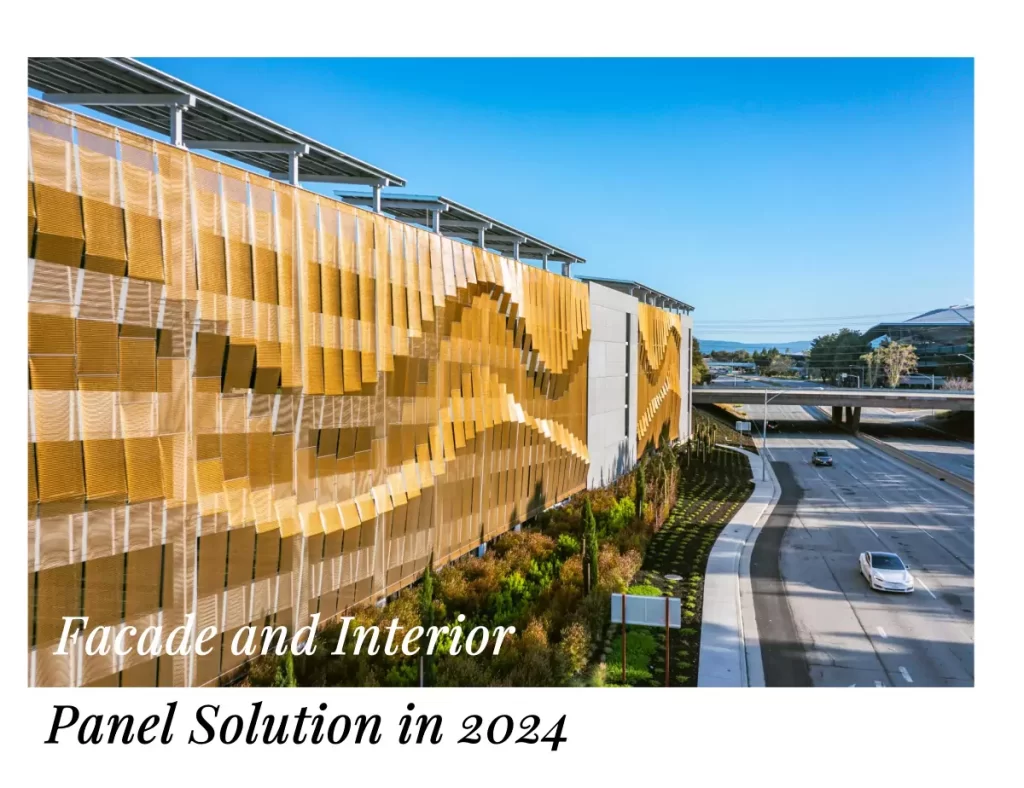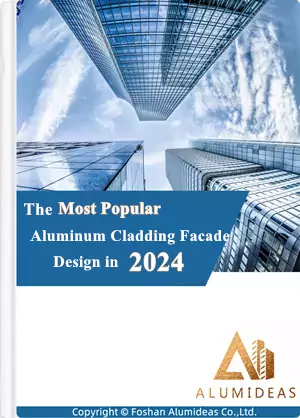ACP biasanya mengacu pada panel dengan dua lembar aluminium yang terikat pada inti polietilen, while ACM is often described as a broader term that can include panels with a fire-resistant core, such as mineral-filled polypropylene. This core difference is central to many of their varying properties.
Daftar isi
This detailed comparison aims to address the nuances between Aluminum Composite Panel (ACP) and Aluminum Composite Material (ACM), focusing on their definitions, compositions, and various properties relevant to construction and purchasing decisions. Given the potential intent for purchasing, this analysis covers at least 10 aspects, including application scenarios, to provide a comprehensive overview.
Definitions and Composition
- ACP (Panel Komposit Aluminium): Typically defined as a panel consisting of two thin aluminum sheets bonded to a polyethylene core. This structure is common in standard construction applications.
- ACM (Bahan Komposit Aluminium): Often used as a broader term, ACM can refer to any composite material with two aluminum sheets and a core, frequently specifying a fire-resistant core like mineral-filled polypropylene.
The composition is crucial, with ACP’s polyethylene core being lighter and less fire-resistant, while ACM’s fire-resistant core enhances safety but may add weight.
Tahan Api
Fire resistance is a significant differentiator:
- ACP: Research suggests ACP, with its polyethylene core, has a lower fire rating, often classified as flammable under standards like ASTM E-84 (Class C or lower) or EN 13501 (B or C). This makes it less suitable for high-risk environments.
- ACM: The evidence leans toward ACM having a higher fire rating, often achieving Class A or B in US terms, or A2 in European standards, due to its fire-retardant core, making it ideal for buildings requiring stringent fire safety, such as high-rises or hospitals.
Misalnya, sources indicate ACM is chosen for projects with strict fire regulations, like educational institutions, due to its ability to contain fire.
Daya tahan
Both materials are durable, with aluminum providing corrosion resistance. Namun, ACM might have an edge due to its potentially more stable fire-resistant core, though specific data on long-term performance is limited. Both can last over 30 years with proper maintenance.
Berat
- ACP: Lighter due to the polyethylene core, with weights around 2.5 lbs/ft², making it easier to handle and install.
- ACM: Slightly heavier due to the denser mineral-filled core, which could impact transportation and installation costs but is still lightweight compared to solid aluminum.
This difference is evident in product specifications, where ACP’s core density (sekitar 0.9 g/cm³ for polyethylene) contrasts with ACM’s denser fire-resistant materials.
Biaya
- ACP: Generally less expensive, suitable for budget-conscious projects, as it uses standard materials.
- ACM: More costly due to the fire-resistant core and additional manufacturing processes, reflecting its enhanced safety features. Sources highlight that fire-rated materials like ACM are priced higher, impacting overall project budgets.
Instalasi
Both ACP and ACM are installed using similar methods, such as field-fabricated or shop-fabricated systems, involving panel attachment to structures. There are no significant differences noted, though ACM might require additional care to maintain fire ratings during installation, as per installation guides (Installation Methods for ACM Panels).
Maintenance
Both materials are low-maintenance, with aluminum surfaces easy to clean and resistant to staining. ACM might require slightly more attention if its core affects long-term performance, but generally, both need minimal upkeep, as mentioned in durability assessments.
Estetika
Both offer extensive customization options, including various colors, selesai (misalnya, matte, glossy, metalik), and textures. Their aesthetic appeal is comparable, with both suitable for modern architectural designs.
Application Scenarios
- ACP: Best for interior applications, low-rise buildings, or areas with less stringent fire safety needs, such as office lobbies or signage, due to its cost-effectiveness and lighter weight.
- ACM: Preferred for high-risk scenarios like high-rise buildings, rumah sakit, and schools, where fire safety is critical, as its fire-resistant properties meet regulatory demands (Aluminium Composite Panels vs Aluminium Sheeting).
Dampak Lingkungan
- ACP: Has a higher environmental impact due to its polyethylene core, a petroleum-based product with a significant carbon footprint during production and disposal.
- ACM: Potentially more environmentally friendly, with a mineral-filled core that may have a lower environmental impact, though aluminum extraction still poses challenges. Sources highlight ACM’s recyclability as a sustainability factor (The Environmental Impact of ACM Panels).
Regulatory Compliance
- ACM: More likely to comply with stringent fire safety regulations, especially in regions with high building codes, due to its fire-resistant properties.
- ACP: May not meet higher fire safety standards, limiting its use in regulated environments, as noted in fire rating discussions.
Thermal Performance
Both provide thermal insulation, with the core material influencing performance. Polyethylene in ACP offers moderate insulation, while ACM’s mineral-filled core might vary, but specific thermal conductivity data suggests similar performance, with potential variations based on core type.
Isolasi Suara
Both offer sound insulation, with the core providing a barrier. High-quality ACM might perform better due to denser cores, reducing noise transfer, as mentioned in product benefits (Product Guides | ACM Panels).
Flexibility in Design
Both are highly flexible, allowing bending, pemotongan, and shaping for various architectural designs. Their versatility is similar, with both suitable for complex shapes. Check out the comparison table below, and you will know how to choose the Right Aluminum Composite Panel for Your Project.
| Aspect | ACP | ACM |
| Core Material | Polyethylene (PE) | Fire-resistant (misalnya, mineral-filled) |
| Tahan Api | Lower (flammable) | Higher (fire-resistant) |
| Berat | Lighter | Slightly heavier |
| Biaya | Less expensive | More expensive |
| Instalasi | Similar to ACM | Similar to ACP |
| Maintenance | Low | Low |
| Estetika | High, dapat disesuaikan | High, dapat disesuaikan |
| Application Scenarios | Interiors, low-rise | High-rises, high-risk areas |
| Dampak Lingkungan | Higher due to PE | Potentially lower |
| Regulatory Compliance | May not meet strict codes | Meets strict fire codes |
| Thermal Performance | Moderate insulation | Varies, potentially similar |
| Isolasi Suara | Moderate | Potentially better |
| Flexibility in Design | High | High |
Alumideas is a professional exterior wall panel manufacturer. If you have more questions about ACM and ACP, please contact our professional team to answer your questions. You are also welcome to consult us on project procurement issues.
Looking For a ACM Supplier For Your Projects?
Alumideas adalah produsen fasad aluminium di Cina. Kami memberikan solusi terpadu untuk proyek pelapis dekoratif interior dan eksterior Anda. Minta penawaran sekarang!
Kami akan menghubungi Anda di dalam 1 hari kerja, harap perhatikan email dengan akhiran “@alumideas.com”.
